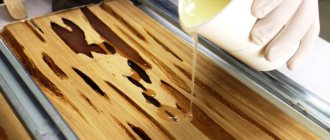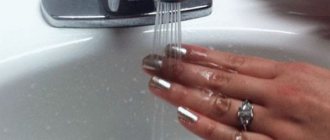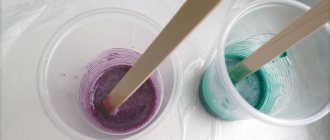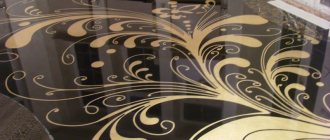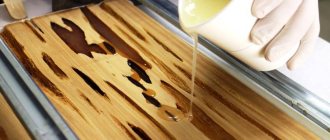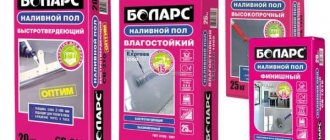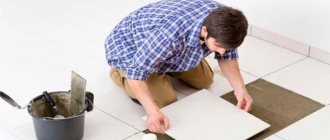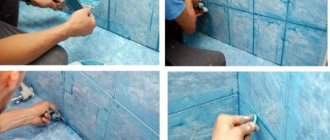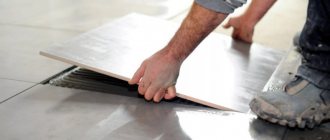To glue something together, special adhesives are used. One of the most accessible materials is epoxy glue. It allows you to connect a variety of surfaces to each other. In this article we will talk in more detail about how to glue with epoxy glue at home. Plus, you will learn how long it takes for epoxy to dry, and we will tell you how to prepare an elastic composition for gluing.
Epoxy doesn't dry - why?
If 12 and 24 hours have passed and the glue remains viscous, there are several reasons:
- the room was cold, the ambient temperature was lower than the temperature at which the glue hardens (indicated on the package);
- the proportions were chosen incorrectly - less hardener was added than needed; in this case, the glue may partially harden, but a sticky film (resin that has not entered into the reaction) will remain on it, which, however, may dry out after a couple of weeks;
- added dye (if you put something other than the two main components) interfered with the reaction;
- The epoxy does not harden even if the hardener is spoiled or expired.
So we figured out how to properly glue flowers to fittings and other items for the home and creativity with epoxy glue. And here is the finished rose brooch.
Inspiration and more flowers to everyone!
Drying time
The curing time depends on environmental factors and occurs within 24 hours. It is not advisable to use the products before the specified time interval has expired.
However, small household items (for example, jewelry) can be used after 12 hours.
Initially, the composition hardens in about 30-60 minutes. Cold welding requires 5-20 minutes. Be sure to check the instructions so that you have time to carry out all the necessary manipulations with the glue, otherwise it will be damaged.
“Flaws in the work must be eliminated immediately, without waiting for the composition to harden. To eliminate it, a rag or a small bandage is enough to blot off the excess mass. The remaining stains are removed mechanically."
How to wash
If the glue gets on a surface that is not to be glued and has not yet had time to harden, it can be cleaned with a soap solution. Stubborn residues can be removed with acetone. The hardened mixture can be removed with liquid vegetable oils, under the influence of which it softens and peels off.
- Freezing. Epoxy can withstand low temperatures down to -20°C, so freezing it in a home freezer is ineffective. It must be removed with an aerosol refrigerant. If you spray it on the adhesive surface, it will become brittle. Afterwards, you need to remove the glue with a spatula or a blunt knife. Removal must be done carefully to avoid injury from glue fragments.
- Heat. The glue softens when heated with a household hair dryer or iron. Solid heat-resistant layers must be heated with a hairdryer with heated air flow at the maximum level for several minutes. The softened areas are scraped off with a spatula. Heat until all excess residue is removed. If epoxy drips onto the fabric, it needs to be heated with an iron, placing a cotton rag on the front side of the material.
- Scraping. Hard, scratch-resistant surfaces can be cleaned of the adhesive mixture mechanically. Any metal tool can be used for this.
- Exposure to chemical solvents. This method cleans wear-resistant materials that are not exposed to aggressive environments. Acetone, alcohol, butyl acetate, aniline, and toluene can be used as a diluent. You need to moisten the contaminated area with any of these products, wait until the glue softens and remove its remains mechanically. You can remove glue from mirror surfaces with acetic acid.
How long does it last after it hardens?
Structures, materials and products created using epoxy resin are initially oriented to temperature standards established in accordance with accepted operating standards:
- Temperature from –40°С to +120°С is considered constant;
- the maximum temperature is +150°C.
But such requirements do not apply to all brands of resins. For specific categories of epoxy substances, there are extreme standards:
- casting epoxy compound PEO-28M – +130°C;
- high-temperature adhesive PEO-490K – +350°C;
- epoxy-based optical adhesive PEO-13K – +196°C.
Such compositions, due to the content of additional components, such as silicon and other organic elements, acquire improved characteristics. Additives were not introduced into their composition by chance - they increase the resistance of the resins to thermal effects, of course, after the resin hardens. But not only that - these can be useful dielectric properties or good ductility.
Epoxy substances of the ED-6 and ED-15 brands have increased resistance to high temperatures - they can withstand up to +250°C. But the most heat-resistant are resinous substances obtained using melamine and dicyandiamide - hardeners that can cause polymerization already at +100°C. Products in the creation of which these resins are used are distinguished by increased performance qualities - they have found application in the military and space industries. It’s hard to imagine, but the maximum temperature that cannot destroy them exceeds +550°C.
Review of the most popular representatives
What kind of “epoxies” can be found in modern construction stores?
Let's figure it out:
- "Moment". Easy to find in every hardware store due to its very wide distribution. Characteristics:
| Parameter | Description |
| Color | Transparent |
| Packing | Tubes |
| Country of origin of the brand | Germany |
| Volume | 12 g (2 tubes of 6 g each) |
| Price | 180 rubles |
Sample of the “Moment” brand
- "Contact". It is sold in the form of a plastic mass and is excellent at restoring structures exposed to excessive moisture. Characteristics:
| Parameter | Description |
| Volume | 70 ml |
| Temperature range | -40 to +150 degrees Celsius |
| Drying time | 60-120 seconds |
| Price | 220 rubles |
Sample of the “contact” stamp
- "EDP". The price and quality of this composition, according to many masters, can boast of their optimal ratio. Characteristics:
| Parameter | Description |
| Color | Yellow |
| Volume | 280 g |
| Curing period | Day |
| Price | 170-200 rubles |
Sample of the "EDP" brand
Methodology for working with material
The main specific feature of epoxy is the hardening of this material not by evaporation of components, such as varnishes, but through reactions occurring in the hardener and the resin itself. This reaction leads to polymerization of the epoxy, which hardens irreversibly. Since evaporation of components is eliminated, shrinkage of the epoxy resin is eliminated. Whatever volume you pour onto the workpiece, you will receive exactly the same amount upon completion of hardening. The varnish shrinks - when you pour a puddle with a convex surface, after drying it turns into a film, losing part of its volume.
In addition to the epoxy resin itself, you need:
- hardener specifically for it;
- two syringes without catheters;
- glass for disposable use;
- a stick used to mix the resin.
One syringe is used to determine the dose of resin and pour this substance into the glass. A similar action is performed with the hardener. It is necessary to pour a hardener into the resin, but the opposite is unacceptable. The hardener, as a rule, has a rather liquid consistency; it can splash out when sharp pressure is applied to the syringe. The ratio of hardener to resin for the mixture may vary from one manufacturer to another, for this reason you should carefully study the instructions, measuring exactly the amount recommended by the manufacturer, since incorrect proportions lead to unsatisfactory hardening of the epoxy resin.
The two liquids are thoroughly mixed until the mixture becomes homogeneous. This is done without haste, otherwise bubbles may form. When the epoxy resin and hardener have a liquid consistency, the bubbles that appear go to the surface, bursting, however, if the density of the components is sufficiently high, the bubbles remain where they were (the density of the components is determined by the manufacturer). If the epoxy resin is not mixed thoroughly enough, it does not harden well.
We wait for the contents in the glass to reach the consistency required for use (polymerization is slow, the thickness of the epoxy resin increases over time). Without this, the epoxy resin will not stick to the desired surfaces.
Fast curing EDP adhesive
This product is produced in packages of 45/250 g and is two-component. The first bottle contains epoxy and a number of modifiers, the second bottle contains a hardener. Purpose of fast-curing adhesive:
- connection of composite and metal products, objects made of alloys, ceramics, glass, and other materials;
- repair and sealing of devices;
- sealing chips, defects, cracks.
Typically this type of EAF adhesive is used when fast curing is required. The product replaces cold welding.
Advantages of glue
The adhesive composition has the following advantages:
- ensuring the required level of strength after 6 hours from the moment of application;
- work at a temperature of 10-30 degrees;
- low labor intensity of the process, the ability to process the adhesive seam even before the end of complete polymerization.
Application of fast-curing EAF
Before use, surfaces should be carefully prepared - cleaned, degreased, and dried. To improve adhesion, sandpaper is used. The bottle with resin is placed in water at a temperature of 60 degrees for 8 minutes. 1.5 parts of epoxy are mixed with 1 part of hardener, the resin lifetime is 30 minutes. You can use any fillers - cement, chalk, alabaster, fibers, graphite in a volume of up to 20%. The composition is applied in a thin layer to both surfaces, connected and pressed. Leave the product in the fixed position for 6 hours. Afterwards it is completely ready for use.
Temperature
Most adhesives tolerate heat from +150-180C well, without reducing the strength characteristics of the seam.
There is adhesive with increased heat resistance that can withstand temperatures of +250C, and there are also those that can withstand short-term exposure to 400C.
For glue to harden normally at home, completely different temperatures are required. A room temperature of +20-23C is sufficient.
For some epoxies, a temperature of +10-15C is enough, but there are few of them. Keep in mind that as the temperature decreases, the rate of polymerization slows down.
Heating, on the contrary, accelerates the hardening of the composition.
Preparing the surface for applying epoxy resin
Regardless of what material the surfaces are made of, it is important to follow all rules and recommendations, since this may affect the quality and service life of the glued structure. First you need to degrease the surface
The presence of fatty deposits will negatively affect the hardening of the adhesive. The surface also needs to be sanded. To sand a small area, you can use sandpaper; large surfaces are better treated with sanding machines.
First you need to degrease the surface. The presence of fatty deposits will negatively affect the hardening of the adhesive. The surface also needs to be sanded. To sand a small area, you can use sandpaper; large surfaces are better treated with sanding machines.
The manufacture of laminated glass involves applying each layer to a sticky surface.
A properly prepared surface will affect how long it takes for the epoxy resin with hardener and fiberglass to dry.
Instructions for use
The process of all work consists of three main stages that must be performed correctly
Sequence of work:
- Cleaning the bonded surface.
- Preparation of the adhesive material itself.
- Gluing.
The surface is cleaned using sandpaper, degreasing, and then drying. In large-scale production, processing is carried out using sand or ultrasound, and the parts themselves are degreased in an organic solvent and an etching process in acid is carried out.
Preparing the glue involves squeezing the epoxy resin into a mixing container, then adding the required amount of hardener, usually a ratio of 1:10. The last stage of preparation is mixing all the ingredients by hand.
The finished glue is applied to one of the parts, pressed tightly with the other part and left in a fixed state for 10 minutes. The product can be used after a few hours.
Epoxy glue proportions
The instructions say that for 100 parts of resin you need to take 10 - 13 parts of hardener. Or for 10 parts of resin (viscous slurry in a larger bottle), you need to take 1 - 1.3 parts of liquid hardener from a smaller bottle.
You need to measure the components very accurately, and it is better to use syringes for this.
It is more convenient to measure the resin by pouring it into the syringe from above (remove the piston first and plug the nozzle of the syringe). Drawing resin through a piston or needle is unrealistic.
You can measure the hardener with a syringe through the piston, because... the viscosity of the substance is low.
Looking at the divisions of the syringe, it is easy to measure out a tenth.
We measure the proportions of epoxy: on the left - resin; on the right - hardener
For each epoxy adhesive, the proportions are “individual” - they are indicated on the packaging. The main requirement is to follow them.
Common brands
There are many epoxy adhesives from imported and domestic manufacturers on the Russian market:
- “Moment” (Henkel) is a heat-resistant adhesive composition of a high strength class, developed on the basis of epoxy resin and packaged in small tubes (50 g) or in bulk packaging intended for reusable use. Representatives: “Super Epoxy”, “Epoxylin”.
- TechnoNIKOL is a high-temperature polyurethane adhesive composition, presented in the form of a paste-like mass. Before use, it is recommended to read the instructions for use and mix, combining the components. Used for laying parquet, natural stone and ceramic tiles, it has high mechanical strength and is shock-resistant and does not conduct current.
- “EDP” (NPP Rogneda) is a two-component product used both in production and in everyday life. It has high adhesive properties and high bonding strength.
- Flex is a multi-component product used in industry and production for interior and exterior work. Designed for bonding lines up to 5 mm per cut.
- Sikadur 31cf normal - instantly glues metal products. The level of fixation can be compared to heat treatment in terms of strength. Used both in production and at home.
- "ED-20" is an epoxy resin, which is an oligomer. Polyamide is used for hardening. Used as an adhesive, sealant, protective coating or reinforced plastic. In order to make the mixture, you need to dilute the components, stirring until smooth.
- Done Deal is a high-strength, quick-drying, conductive adhesive that reliably and quickly glues any combination. The packaging is presented in the form of a syringe, the mixture is black.
- "Poxipol" - cold welding or fiberglass. Available in two tubes in the form of epoxy resin and hardener. Poxipol glue dries in 5-6 minutes. After this time, it hardens completely.
- Eporip Mapei is a two-component, heavy-duty product designed for adhesion to fresh concrete mix and old concrete. Epo is widely used to correct cracks in screeds. Does not contain solvents.
The best brands are Titan, Abro, Endfest 300, Uhu, Mapei, Ultima (Ultima), Secunda, Eporip (Krasnodar). They are used for granite, concrete and polyurethane, as well as for plumbing. They can be used for car plastic and for gluing crafts with your own hands.
Areas of operation
The use of adhesive compositions of this type today has covered a lot of different areas:
- Construction . Here, probably, the substance in question has gained the greatest popularity.
Here are just some variations of its use:
- Connecting reinforced concrete bridge components . Imagine: perhaps every day you drive or walk across a river or railroad bed on a structure that maintains its integrity thanks to glue;
panel houses. And it is precisely the considered method of combining them into one that makes it possible to do without nails or self-tapping screws that violate the insulating properties of materials;
- Tile installation . Tilers often use “epoxy” in the course of their professional activities;
Laying tiles using an epoxy composition guarantees high reliability of its fixation
- Mechanical engineering . Here, too, many operations cannot be completed without the use of epoxy compositions.
Among them are:
- Manufacturing of abrasive tools and technological equipment;
- Fixing brake pads and plastic fragments to iron bases;
- Restoration of the gasoline tank, car body, gearbox, trim and brake box;
Repair work using epoxy
- Aircraft engineering . Even here, epoxy adhesives are needed, in particular in the manufacture of solar panels, creating glue-welded joints, attaching internal and external thermal protection;
- Shipbuilding . Proximity to water also does not frighten such a universal adhesive composition.
With his help:
- Vessels are assembled from fiberglass;
- Waterproof barriers are created that maintain a stable level of humidity;
- The hull parts of yachts and boats are processed;
Treating the boat frame with epoxy glue
- Life . The joining of various materials using the adhesive method is so in demand in the household sphere that it also does not lag behind the already listed areas in terms of popularity of using “epoxy”. Most often, this involves repairing literally everything that can crack, break off or break, sealing pipe seams, assembling various models and souvenirs.
Do-it-yourself furniture restoration using epoxy mortar
Choosing insulation
Despite the fact that the insulation layer is located in the thickness of the walls or roofing pie, its properties also greatly influence the effectiveness of the fire protection of the house. A layer of high-quality non-flammable insulation eliminates the risk of internal fire under the roof or siding of the cottage, and also prevents the flame from spreading inside the house. Let's consider the advantages and disadvantages of the three most popular materials for thermal insulation of country houses on the modern market.
- Expanded polystyrene - produced from polystyrene by heating and introducing foaming agents. All types of expanded polystyrene belong to the group of highly flammable synthetic materials. Expanded polystyrene quickly flares up and becomes the initiator of further spread of the flame, and also emits caustic smoke and toxins such as hydrogen bromide, hydrogen cyanide and phosgene when burning. To reduce the flammability of expanded polystyrene, various additives are introduced into the material during manufacturing to reduce smoke formation and increase the ignition temperature;
- Extruded polystyrene foam (EPS) is foamed polystyrene - a lightweight porous material consisting of 98% air. EPS belongs to the category of medium-flammable materials; it does not spread flame over its surface, but emits smoke that is hazardous to health when burned. Despite its shortcomings, expanded polystyrene is in demand on the market and is widely used to create warm floors, insulate walls and ceilings;
- Stone wool is one of the new generation of environmentally friendly insulation materials and consists of solid mats and blocks of fibers obtained from gabbro-basalt rocks. Stone wool belongs to the class of non-combustible materials and does not melt at temperatures up to 1000 C°. In addition to fire resistance, this insulation has a number of other advantages (strength, vapor permeability, minimal thermal conductivity and ease of processing), making it an ideal choice both for insulating the roof and walls of a house, and for creating a heat-insulating layer in the floors between floors. Thanks to its excellent thermal insulation properties, stone wool is officially recommended for insulating buildings with high fire safety requirements.
To summarize, we note that despite the large selection of building materials, only some of them fully comply with fire requirements and are able to effectively protect a residential building from the spread of fire. The most durable, economical and easy-to-install products for creating fire-resistant roofing and facade cladding are steel products - metal tiles and steel siding, which meet the most stringent fire safety standards. To create the most fire-resistant construction of a cottage, the steel roof and cladding can be supplemented with a heat-insulating layer of stone wool - it is from this combination of materials that multi-layer fire walls are created that can hold a fire for several hours.
Products for metal
In this section we will look at how you can glue metal elements using glue. The steps are the same as when working with other materials: the glue is mixed with the components and applied to a dry and clean surface.
An example of glue is “Moment Super Epoxy Metal”. Actively comes into contact with alloys of steel, copper, aluminum, etc.
The seams formed are heat-resistant (stable at temperatures up to +250C), therefore they have proven themselves well in conditions of elevated temperatures.
Curing speed
In conclusion, it is worth paying attention to the question of how quickly the epoxy adhesive hardens. Some, in order to speed up this process, think that more hardener can be added
Thanks to this, the composition will quickly harden. However, this is a misconception. If you want to achieve rapid hardening of two surfaces, then you need to artificially increase the temperature.
Conclusion So, now we have looked at all the features of epoxy glue. Decide for yourself which one is better to choose. You can purchase a proven domestic manufacturer
When choosing, be sure to pay attention to the expiration date of the composition on the packaging.
Choose the glue that will fulfill its main purpose. We hope this material was useful to you. You have learned about the main properties of epoxy glue. Additionally, we suggest watching the video: How to properly mix epoxy resin.
How long does it take for resin to harden?
Although we explained above why exact calculations are impossible, to work adequately with epoxy resin you need to have at least a rough idea of how much time will be spent on polymerization. Since a lot depends both on the proportions of hardeners and plasticizers in the mass, and on the shape of the future product, experts advise making several experimental “formulations” with different proportions in order to clearly understand what relationship of the various components will give the required result. Make test samples of the mass small - polymerization does not “reverse”, and it will not be possible to obtain the original components from a frozen figure, so all damaged workpieces will be completely damaged.
Understanding how quickly epoxy hardens is necessary, at least for a clear planning of your own actions, so that the material does not have time to harden before the master gives it the desired shape. On average, 100 grams of epoxy resin with the addition of PEPA hardens in shape for at least half an hour and an hour at most at room temperature of 20-25 degrees.
Reduce this temperature to +15 - and the minimum setting time will sharply increase to 80 minutes. But this is all in compact silicone forms, but if you spread the same 100 grams of mass at the room temperature mentioned above over a surface area of a square meter, then be prepared that the expected result will appear only tomorrow.
An interesting life hack follows from the pattern described above, which helps preserve the fluid state of the working mass longer. If the work requires a lot of material, with strictly identical properties, and you simply do not have time to process it all, then divide the prepared mass into several small portions.
When working with the material, pay attention to how it hardens. Whatever the starting temperature, whatever type of hardener, the stages of hardening are always the same, their sequence is stable, the proportions of the speed of passing the stages are also maintained
Actually, the fastest way is for the resin to transform from a full-fledged fluid liquid into a viscous gel - in its new state it can still fill molds, but its consistency already resembles thick May honey and will not convey the thin topography of the container for pouring. Therefore, when working on crafts with the smallest relief patterns, do not chase the speed of hardening - it is better to have a one hundred percent guarantee that the mass will completely repeat all the features of the silicone mold.
If this is not so important, remember that later the resin from a viscous gel will turn into a dough-like mass that strongly sticks to your hands - it can still be molded somehow, but it is more likely to be glue than a material for full-fledged modeling. If the mass gradually begins to lose even its stickiness, it means that it is close to hardening - but only in terms of stages, and not in time, because each subsequent stage takes much more hours than the previous one
If you are making a full-fledged large-sized craft with fiberglass filler, it is better not to expect results faster than in a day - at least at room temperature. Even when frozen, such a craft will in many cases be relatively fragile. To make the material stronger and harder, you can even use “cold” PEPA, but heat it to 60 or even 100 degrees. Not having a high tendency to self-heating, this hardener will not boil, but it will harden faster and more reliably - within 1-12 hours, depending on the size of the craft.
Security measures
When working with epoxy, safety precautions should be observed. Wear gloves, a respirator and thick clothing. The room should be well ventilated to prevent harmful vapors from entering the respiratory tract.
If glue accidentally gets on exposed skin, immediately wash it off with soap and water and wipe dry.
Dishes that have been diluted with glue must not be reused and should be thrown away immediately. Large-scale work must be done outside the home, preferably in the fresh air.
Composition and properties
Epoxy adhesives from different manufacturers may contain different components, but the basic composition is always the same, it complies with GOST and the attached certificates. Two main substances in the composition are strictly required:
- epoxy resin itself;
- liquid or paste hardener.
Polyamines, carboxylic acids, and aminoamides are used as a curing composition. One-component adhesives always contain solvents (acetone, xylene, alcohols), which prevent the mass from hardening before contact with air and evaporation. The following can act as modifying additives and fillers for glue:
- synthetic rubber;
- formaldehyde resin;
- fiberglass;
- clay, chalk;
- aluminium oxide;
- vanadium, nickel, zinc powders;
- organosilicon resins.
All of the above binding components provide the epoxy adhesive with the desired properties:
- optimal density;
- seam strength;
- high curing speed;
- resistance to oils, gasoline, water, atmospheric factors;
- resistance to cracks and shrinkage.
It is also worth noting that glue does not conduct current - it is a dielectric, so it is often used to insulate electricity.
Bonding plastic
Epoxy glue interacts with almost all plastic; it is important to determine what type it is before starting work:
- easy to glue (does not require preparation) – polyacrylates, polycarbonates, ABS;
- conditionally easy to glue (requiring little preparation) – polystyrenes, polyesters;
- difficult to glue (requiring careful preparation) – polypropylenes, polyformaldehydes.
The first two types of plastic will not cause any particular difficulties and you can work with them at home.
You cannot work with the third type without special professional training. Plastic easily interacts with any glue, but EAF is the best option.
The second type of plastic must first be cleaned with sandpaper and degreased exclusively with ethyl alcohol.
Acetone and solvents are prohibited! After applying the glue, fix it for an hour and a half and then dry it in accordance with the time in the instructions.
